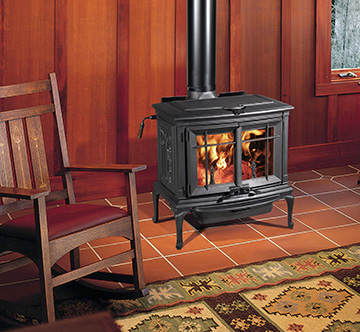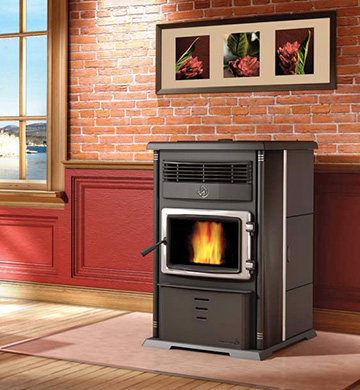What is an EPA-certified Wood Stove?

EPA Certified Wood Stove
Bringing in supplemental heat to a home has never been easier. A mesmerizing selection of stand-alone stoves and elegant fireplaces are available in every size, color, style and finish imaginable. People who are inclined toward wood-burning stoves will be happy to know that these appliances are not only easy to operate but increasingly safe, as well.
EPA certification for wood stoves
Most wood stoves in the United States must be certified by the Environmental Protection Agency. These include catalytic, non-catalytic and pellet-fueled stoves.
To obtain this “approval” from the EPA, wood-burning stoves must meet strict emissions protocols. Not long ago, these protocols allowed for a particle emissions level of no more than 4.5 grams per hour. More stringent standards were enacted in February 2015, now allowing just 2.0 grams of particle emissions per hour.
Stoves that are certified by the EPA include both the firewood and pellet varieties. In some cases, these units have two air intakes – a primary and a secondary. Controlling the particle emissions is possible in this kind of system because secondary air mixes with exhaust gasses and re-ignites them before they rise up into the chimney. The result is much less potentially dangerous substances adhering to the walls of the chimney along with an increased burn time for the fire.
Stoves with catalytic converters
Some stoves come with catalytic converters that channel the gasses rather than mixing them with secondary air. During channeling, there is a decrease in the combustion temperature of the gas, which allows it to be consumed at lower firing.
The temperature decrease is due to a palladium coating on the converter. Stoves with catalytic converters are ideal when long, steady heating periods are desired.
Catalytic stove temperatures are very high, and they’re not dependent on a big flame. When starting a fire in these stoves, the temperature is around 550 degrees. After 20 minutes or so, the temperature can rise to as high as 1,700 degrees. Factors affecting temperature include the size of the catalyst, the dryness of the wood being burned and the amount of wood used for the fire.
A catalyst usually lasts up to six years, less if non-approved fuel is used, if the unit’s maintenance is neglected or if the stove is over-used.
Stoves without catalytic converters

EPA Certified Pellet Stove
The design of non-catalytic stoves allows for warm air to be directed into the fire so that smoke will be ignited. The air is released from tubes that are positioned across the top of the firebox. Overall, catalytic stoves are more efficient than the non-catalytic variety.
If a good-looking wood stove would be the perfect addition to your home, the experts at Burlington Fireplace & Heating in Burlington, Wisconsin, will be happy to show you all the newest and most advanced EPA-certified models. With the right advice, selecting the best stove for your home is remarkably easy.
Check out the best in wood-burning stoves at our showroom, located at 857 Milwaukee Ave. For more information, call (262) 763-3522.
